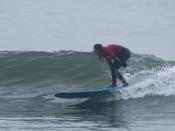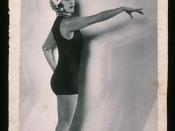In the first section of Wide Sargasso Sea, we encounter Antoinette as a child. We witness in vivid detail, the events of her childhood, which are in no way typical of any child, of her time or ours. She deals with poverty, racism, and alienation, but from a white Creole perspective. Her own traumatic experiences are what sets her apart from the rest of society, while at the same time, trapping her within it.
Narrated by Antoinette, Part One of Wide Sargasso Sea explores her childhood at Coulibri (their estate) after the death of her father, Alexander Cosway. Antoinette's vague and fragmentary memories focus on glimpses of tropical landscape, descriptions of her mother, and examples of her childhood isolation. Racial tensions and the disapproval of the white Jamaicans are found throughout these memories. Danger seems to lurk, unseen, but felt, in all of these scenes. The novel even begins with an explicit warning, "when trouble comes, close ranks."
A tone of eerie silence is set and maintained in this West Indian landscape--the calm before the storm of racial violence.
In a state of disrepair and decay, the Coulibri Estate depicts the downfall of the Colonial empire and the consequences of its exploitative reign in the West Indies. The bizarre tale about Mr. Luttrell, who shoots his dog and swims off into oblivion, speaks to the mood of apprehension among the island's whites, who fear the imminent revenge of the black ex-slaves. Antoinette, as the narrator, seems especially preoccupied with morbidity and decay. The text is saturated with images of death and rotting, such as the flies that hover over the carcass of Annette's poisoned horse.
Religious symbols and imagery also dominate the novel's opening passages. Godfrey, a servant, constantly speaks about a Lord who makes no distinction between blacks...


